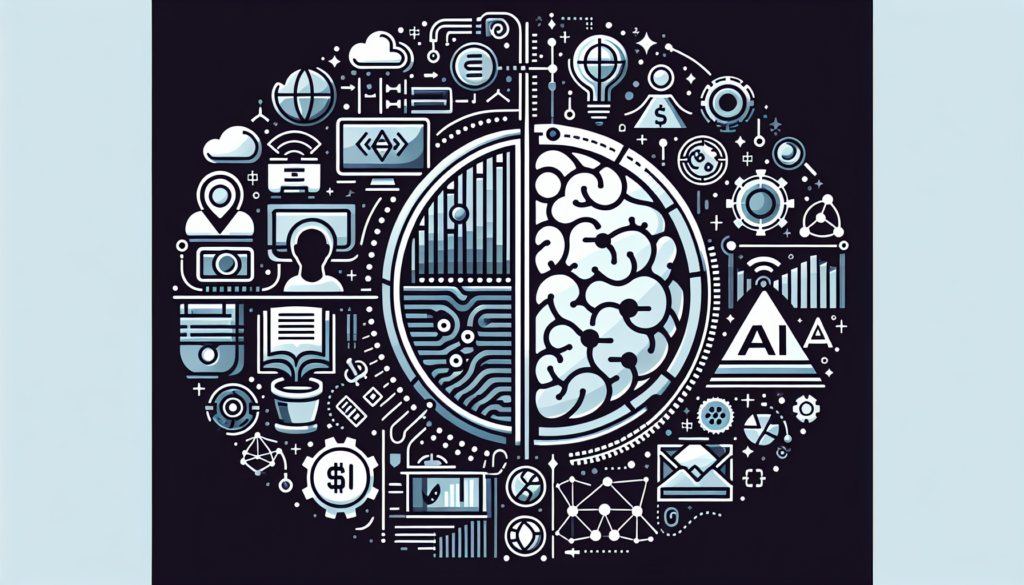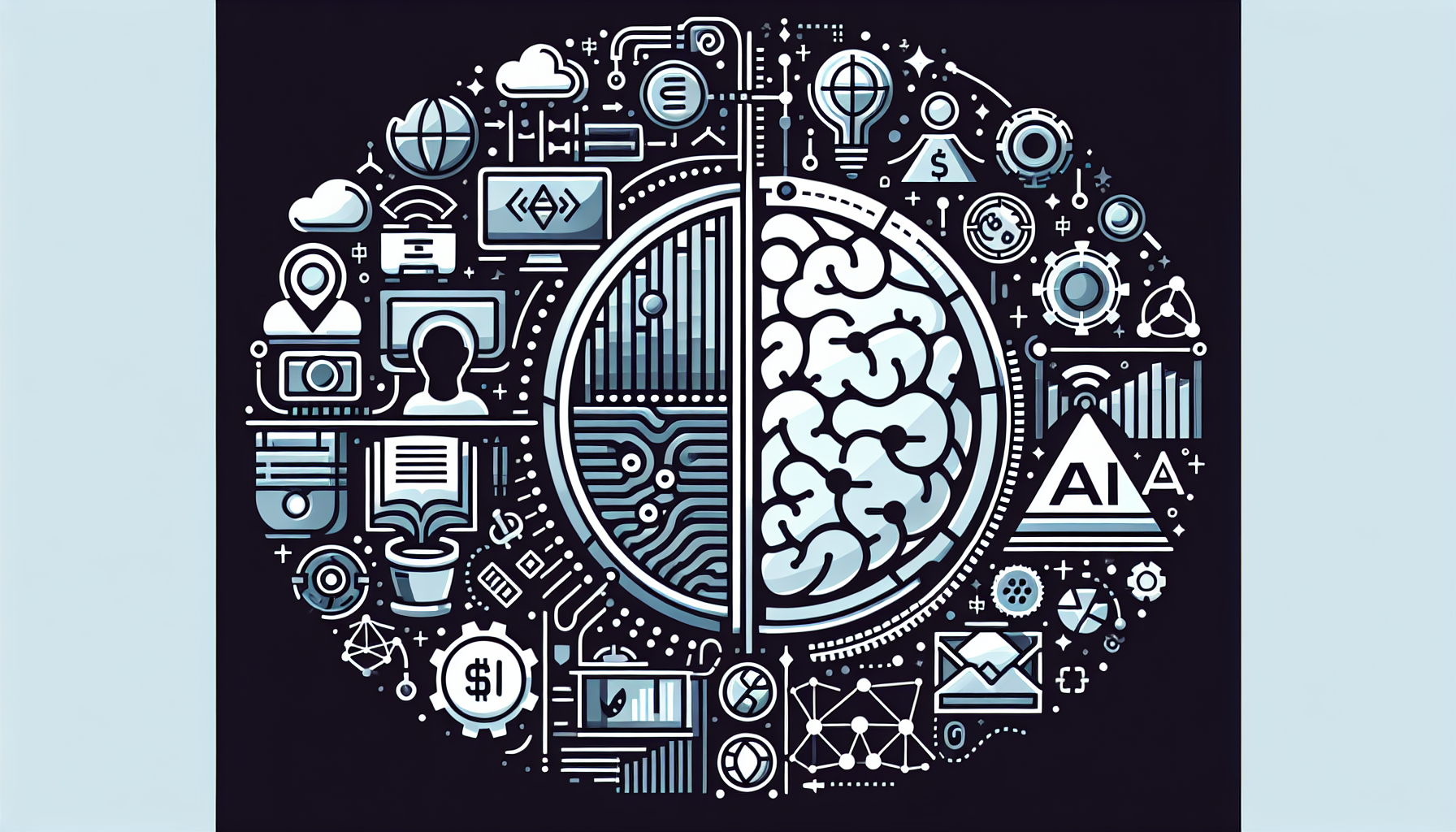Have you ever wondered if it is possible to access a free AI? Well, the good news is that this article will explore exactly that. In today’s world of rapidly advancing technology, AI has become increasingly prevalent, and many people are curious about its applications and how they can benefit from it. So, if you’ve been pondering whether there is a free AI available for you to use, keep reading to find out!
Definition of AI
Artificial Intelligence (AI) refers to the creation of intelligent machines that can perform tasks that would typically require human intelligence. These tasks include learning, reasoning, problem-solving, perception, and language understanding. AI systems are designed to mimic human cognitive processes and make autonomous decisions based on the data they receive and analyze.
Types of AI
There are various types of AI, each with its own capabilities and limitations. Some common types include:
-
Narrow AI: This type of AI is designed to perform a specific task and is often referred to as weak AI. Examples of narrow AI applications include voice assistants like Siri and Alexa, email spam filters, and recommendation systems.
-
General AI: General AI refers to machines that possess the ability to understand, learn, and apply their knowledge to a wide range of tasks, similar to human intelligence. However, such advanced AI systems are still largely theoretical and not widely available.
-
Machine Learning (ML): Machine Learning is a subset of AI that focuses on enabling machines to learn from data and improve their performance without being explicitly programmed. ML algorithms can identify patterns, make predictions, and continuously adapt to new information.
-
Deep Learning: Deep Learning is a subset of ML that involves artificial neural networks with multiple layers. This approach enables computers to learn complex patterns and representations from large amounts of data. Deep Learning has achieved remarkable success in areas such as image and speech recognition.
-
Reinforcement Learning: Reinforcement Learning encompasses self-learning algorithms that make decisions based on trial and error. Through interactions with their environment, machines learn to achieve specific goals by receiving positive reinforcement for correct actions and negative reinforcement for incorrect ones.
Role of AI in society
AI is increasingly playing a significant role in shaping our society and addressing various challenges. Some of its applications include:
-
Automation: AI has the potential to automate repetitive and mundane tasks across industries, freeing up human talent for more creative and strategic endeavors.
-
Healthcare: AI systems can assist in diagnosing illnesses, analyzing medical images, and predicting patient outcomes. This helps in early detection, personalized treatments, and enhancing overall healthcare delivery.
-
Transportation: Autonomous vehicles powered by AI technology have the potential to revolutionize transportation by improving safety, reducing congestion, and increasing overall efficiency.
-
Customer Service: AI-powered chatbots and virtual assistants are becoming increasingly prevalent in customer service interactions, providing efficient and personalized assistance round-the-clock.
-
Finance: AI algorithms can analyze vast amounts of financial data to identify patterns, manage risks, and make accurate predictions. This assists in stock trading, fraud detection, and credit scoring.
-
Environmental Impact: AI can aid in monitoring and managing environmental conditions by analyzing large datasets, predicting natural disasters, and optimizing resource allocation.

Importance of AI
The significance of AI is evident in various aspects of our lives. It has the potential to:
-
Drive Innovation: AI enables the development of novel technologies, products, and services, fostering breakthroughs in diverse fields.
-
Enhance Decision Making: AI systems can process vast amounts of data and provide valuable insights, helping individuals and organizations make informed decisions.
-
Improve Efficiency: By automating tasks and optimizing processes, AI can streamline operations, reduce costs, and enhance productivity.
-
Address Complex Challenges: AI can tackle complex problems that would be challenging or time-consuming for humans. It can process and analyze vast amounts of data, identify patterns, and make accurate predictions.
-
Enable Personalization: AI can personalize experiences, such as recommendations, content, and advertisements, based on individual preferences and behaviors.
Availability of Free AI
The availability of free AI tools and platforms has significantly increased in recent years. This allows individuals and organizations to leverage AI capabilities without incurring substantial costs. Some options for accessing free AI include:
Open source AI software
Open source AI software provides access to the underlying code, allowing customization and modification according to specific requirements. Popular open source AI frameworks include TensorFlow, PyTorch, and Caffe. These frameworks offer a wide range of features and algorithms for developing AI models.
AI platforms with free plans
Several AI platforms provide free plans or trial periods, allowing users to explore their functionalities and capabilities. These platforms often offer user-friendly interfaces, pre-trained models, and a host of AI services. Google Cloud AI Platform, IBM Watson, and Microsoft Azure are examples of such platforms.
Free AI tools available online
Numerous free AI tools are available online that cater to specific tasks or domains. These tools often have simplified interfaces and offer functionalities such as sentiment analysis, image recognition, or natural language processing. Some popular free AI tools include Google Cloud AutoML, IBM Watson Studio, and Microsoft Azure Cognitive Services.
Popular Free AI Platforms and Tools
When it comes to free AI platforms and tools, several options stand out due to their popularity and functionality. These include:
TensorFlow
TensorFlow is an open source library for numerical computation and machine learning. It provides a comprehensive ecosystem for building and deploying AI models. TensorFlow offers support for deep learning, reinforcement learning, and natural language processing, making it widely used and highly versatile.
Keras
Keras is another popular open source deep learning library built on top of TensorFlow. It offers a user-friendly interface and simplifies the development and deployment of deep learning models. Keras provides a high-level API for neural network building blocks, making it accessible to users with varying levels of AI expertise.
Scikit-learn
Scikit-learn is a Python library extensively used for machine learning tasks. It provides efficient and simple tools for data mining, preprocessing, model selection, and evaluation. Scikit-learn includes a wide range of algorithms and techniques for classification, regression, clustering, and dimensionality reduction.

Limitations of Free AI
While free AI tools and platforms provide valuable capabilities, it’s essential to be aware of their limitations. Some of the limitations include:
Limited functionality
Free AI tools and platforms may have limited functionalities compared to their paid counterparts. Advanced features and specialized models may be exclusive to premium versions or require additional fees for access.
Data and model limitations
Free AI tools often have restrictions on the size and complexity of the data that can be processed. Large-scale or high-dimensional datasets may require more powerful computing resources or premium versions of the tools.
Support and documentation
Free AI tools may have limited support options and documentation compared to their paid counterparts. This can make troubleshooting and resolving issues more challenging, especially for users with limited AI expertise.
Choosing the Right Free AI
When selecting a free AI tool or platform, it’s essential to consider your specific AI requirements and evaluate the available options. Here are some factors to consider:
Identifying your AI requirements
Determine the specific tasks or problems you want to solve using AI. Consider the type of AI models or algorithms required and the resources needed to handle your dataset size and complexity.
Evaluating available options
Research and compare different free AI tools and platforms based on factors such as functionality, ease of use, community support, and available resources. Consider reading user reviews and engaging with communities to gather insights and experiences.
Considering long-term scalability
Evaluate the scalability of the free AI tool or platform in the long run. Consider the potential need for premium features or upgrades as your AI requirements grow and evolve.
Getting Started with Free AI
Once you’ve selected a free AI tool or platform, getting started involves a few key steps:
Downloading and installing open source AI software
If you choose an open source AI software like TensorFlow or Keras, visit their official websites to download the necessary files and follow the installation instructions provided. Ensure compatibility with your operating system and hardware requirements.
Creating an account on AI platforms
For AI platforms with free plans or trial periods, visit their websites and create an account. Follow any provided guides or tutorials to get familiar with the platform’s interface and features. Take advantage of any available documentation and community resources to accelerate your learning process.
Exploring free AI tools online
For free AI tools available online, visit their websites and explore their functionalities. Many tools provide interactive demos or guides to help you understand how to utilize their capabilities effectively. Experiment with sample data or use cases to gain hands-on experience with the tool.
Learning AI for Free
To enhance your understanding and skills in AI, there are several resources available for free:
Online AI courses and tutorials
Various online platforms offer free AI courses and tutorials, ranging from introductory to advanced levels. Platforms like Coursera, edX, and Udemy provide access to high-quality educational content, allowing you to learn at your own pace and gain industry-recognized credentials.
AI community forums and resources
Engaging with AI community forums and resources, such as Stack Overflow, Reddit, and AI-specific blogs, can provide valuable insights and solutions to specific AI challenges. Actively participating in these communities can help broaden your knowledge and network with fellow AI enthusiasts.
Hands-on projects and challenges
Undertaking hands-on AI projects and participating in challenges, such as Kaggle competitions, can provide practical experience and enhance your problem-solving abilities. These platforms often provide datasets and evaluation metrics, allowing you to benchmark your skills against others in the AI community.
Benefits of Free AI
Using free AI tools and platforms offers several benefits:
Cost-effectiveness
Free AI options allow individuals and organizations to leverage AI capabilities without significant financial commitments. This makes AI accessible to a broader range of users, fostering innovation and democratizing AI adoption.
Learning and experimentation
Free AI tools provide a low-risk environment for users to learn and experiment with AI concepts and technologies. It allows individuals to gain experience, develop skills, and validate AI use cases before making substantial investments.
Opportunities for collaboration
Free AI tools and platforms often have active communities where users can collaborate, share knowledge, and contribute to open source projects. This fosters collective learning and collaboration, benefiting the AI community as a whole.
Use Cases for Free AI
Free AI tools and platforms can be applied to various use cases across industries:
Automated data analysis
Free AI tools equipped with data analysis capabilities can assist businesses in uncovering patterns, trends, and insights from large datasets. This enables data-driven decision making across domains such as finance, marketing, and supply chain management.
Natural language processing
Free AI tools focused on natural language processing can be utilized for applications such as sentiment analysis, chatbots, and language translation. These tools facilitate efficient communication and understanding between humans and machines.
Computer vision
Free AI tools with computer vision capabilities enable the analysis and understanding of visual data, including image recognition, object detection, and facial recognition. This has applications in areas such as autonomous vehicles, surveillance, and medical imaging.
Conclusion
The availability of free AI tools and platforms has opened up new possibilities for individuals and organizations to harness the power of AI. From open source software to AI platforms with free plans, and a myriad of free online tools, there are numerous options to explore and utilize AI capabilities without substantial financial investments.
However, it’s important to be mindful of the limitations of free AI, including restricted functionality, data limitations, and potential support constraints. By evaluating your specific AI requirements, considering scalability, and selecting the right free AI tool or platform, you can effectively leverage AI for various use cases.
Furthermore, taking advantage of free AI resources like online courses, community forums, and hands-on projects can further enhance your understanding and skills in this ever-evolving field. The benefits of free AI encompass cost-effectiveness, learning opportunities, and collaborative possibilities.
With the wide-ranging applications of AI in society, from automation to personalized experiences, the importance of AI cannot be overstated. By embracing free AI options, individuals and organizations can tap into this transformative technology and drive innovation, improve efficiency, and address complex challenges.
